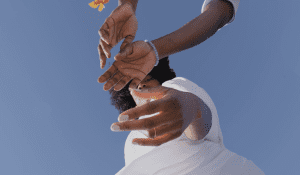Bipolar disorder is a mental disease that causes sudden changes in mood. It is represented through extreme highs and lows. Bipolar disorder has been known to run in families, so it may be inherited. It can affect anyone regardless of age or sex, but it most often appears between the ages of 18-24 for males and 25-35 for females. It is not something you just “get over” as some people think. Many people have the idea that if you have bipolar disorder you’re either happy or sad all the time, but this isn’t always true. If you do suffer from the bipolar disorder it means your moods are alternating between periods of depression (feeling sad) and mania (overly excited).
Bipolar disorder’s chief symptoms are serious changes in mood and energy. The bipolar person encounters typically experiences extreme highs (mania) and lows (depression). There can be a major disruption in your ability to carry on with the demands of life.
People with bipolar disorder are often unable to control the extreme moods that occur with their bipolar disorder. These moods go beyond just being very happy or sad. Deep depression may leave you feeling helpless and hopeless, while mania could cause reckless behavior such as excessive spending sprees and sexual indiscretions.
The symptoms of bipolar disorder may feel like other health problems
Chief manic symptoms
- Feeling overly excited, or hyperenergetic.
- Having exaggerated optimism and/or grandiosity.
- Racing thoughts and speaking quickly.
- Being easily distracted.
- Inability to concentrate well on any one task at hand.
Bipolar naturally varies widely; it is bipolar I disorder and bipolar ii disorder, these types of disorders have different characteristics.
Bipolar I Disorder
You must have had one or more manic episodes that cause significant problems at work, school, relationships, and other important parts of your life. The severity of manic symptoms must cause serious difficulties in your ability to function normally.
Bipolar I disorder is characterized by one or more episodes of “high” (mania) and one or more episodes of “low,” with the low periods either depression or a mixed state in which symptoms of both mania and depression are present. These periods last for at least two weeks each.
People with bipolar I disorder may have had more frequent manic episodes for a long time. They often have periods of depression too, and often start showing symptoms in their teen years.
Manic depression
A disorder associated with episodes of mood swings ranging from depressive lows to manic highs is called manic depression, a manic phase is also a manic episode and the depressive phase is called depression. Symptoms of an episode may include; Feeling self-important or unrealistically powerful, full of grand schemes, decreased need for sleep without feeling tired, talking so much that others can’t get a word in edgewise, racing thoughts, and high distractibility. A brief manic experience in bipolar disorder is known as hypomania or hypomanic episodes.
The term bipolar ii disorder came into being when researchers realized that depression was the main feature of this condition, but people did get manic episodes too. This condition has one or more major depressive episodes and at least one hypomanic episode (a milder form of mania). Someone with hypomanic episodes only experiences the energy, in addition to some of the other symptoms listed above.
Manic episodes Symptoms
Inflated self-esteem or grandiosity (thinking you are better than others)
Decreased need for sleep (feeling rested after only 3 hours of sleep)
More talkative than usual or pressured to keep talking
Flight of ideas or subjective experience that thoughts are racing.
Distractibility (attention easily pulled away from important tasks)
Bipolar episodes that last longer than a week, or symptoms that are so severe they require hospitalization to prevent harm to self or others. Bipolar depression feel like having a mild case of the flu.
Bipolar II Disorder
You may experience periods where you feel very depressed and lethargic, but not enough for this disorder to be diagnosed as depression. There are also times when you feel overly elated and energized (hypomania). This is the key difference between bipolar disorder I and bipolar II; people with BII never reach full-blown mania. Because hypomania doesn’t significantly affect work or social life like full-blown mania does, most people go undiagnosed until they reach a depressive episode.
Both bipolar disorder types involve cycles of highs and lows, but the symptoms vary from person to person. In both cases, however, mania or hypomania always occurs before the full-blown depression.
Depression
When you have bipolar disorder, emotional suffering is frequent. These are a few examples:n shame and hopelessness for most of the day for at least two weeks in a row. feeling worthless or guilty nearly every day. Difficulty concentrating, remembering things, or making decisions.
Bipolar disorder feels like a dark cloud following you around. In between the manic and depressive episodes, there isn’t much to feel good about. As a result, people tend to want to escape their lives via substance abuse or risky behavior. Treatment can help reduce symptoms and improve overall health and happiness Bipolar disorder is highly treatable with a combination of medication.
The bipolar spectrum has different types of symptoms and the bipolar disorders have common characteristic is mood swings, bipolar disorder I am more severe than Bipolar II. Mostly, bipolar disorder can’t be cured but it can be managed with medication and counseling.
Mood swings and bipolar depression
Mood swings are in different forms, there are extreme mood swings maximally intense moods, depressed mood, normal mood, fluctuating moods, elevated mood, and charming mood. People with bipolar do not have a healthy mood state and experience random mood shifts. Long-term mood cycles can also be experienced in bipolar patients and the short-term remedy is usually giving them mood stabilizers to cure their short-term mood instability and mood episodes.
Mental illness
Mental illness is a common term that is used to refer to mental disorders that affect one’s thinking, feeling, or mood. It is an illness of the brain that causes mild to severe disturbances in thinking and/or behavior. Bipolar is regarded as a mental health disorder and that is the reason a mental health professional is the only one who can treat the disorder.
Mental health and bipolar depression
Mental health is a state of well-being in which the individual is able to use his or her cognitive and emotional capabilities, function in society, and meet the ordinary demands of everyday life. Mental health includes our emotional, psychological, and social well-being. Bipolar disorder causes different changes in your moods that can affect your mental health.
Bipolar depression can happen when you are not bipolar but when it happens frequently then it gives signs that you might have bipolar depressive episodes. You experience mood swings often with inappropriate behavior or anger for no apparent reason causing a disturbance in personal relationships at work or school. During this time you lose interest in doing pleasurable things that were fun before like going out with playing a sport etc. A person having bipolar depression also has symptoms such as slowing or agitation, loss of energy, racing or hostile thoughts, and feelings of worthlessness.
Bipolar disorder and its stages
Bipolar Disorder II is characterized by alternating bouts of mania and depression. You may move back and forth between sadness and euphoria when you have Bipolar Disorder II. Minor depressive symptoms are typical during the melancholy phase, but if you start to experience major symptoms, it will be necessary to treat them. These periods of depression can sometimes become more severe over time, therefore it’s especially vital that you contact a specialist if this happens. There are several medications available for treatment during either stage of Bipolar Disorder II, and many options exist for managing both extremes as well as the depressive ones in your life.
However, once you reach the hypomanic stage – where your mood is elevated but not manic-you may start feeling euphoric, full of energy, and creative. This is the stage where you’ll feel like your usual self again.



